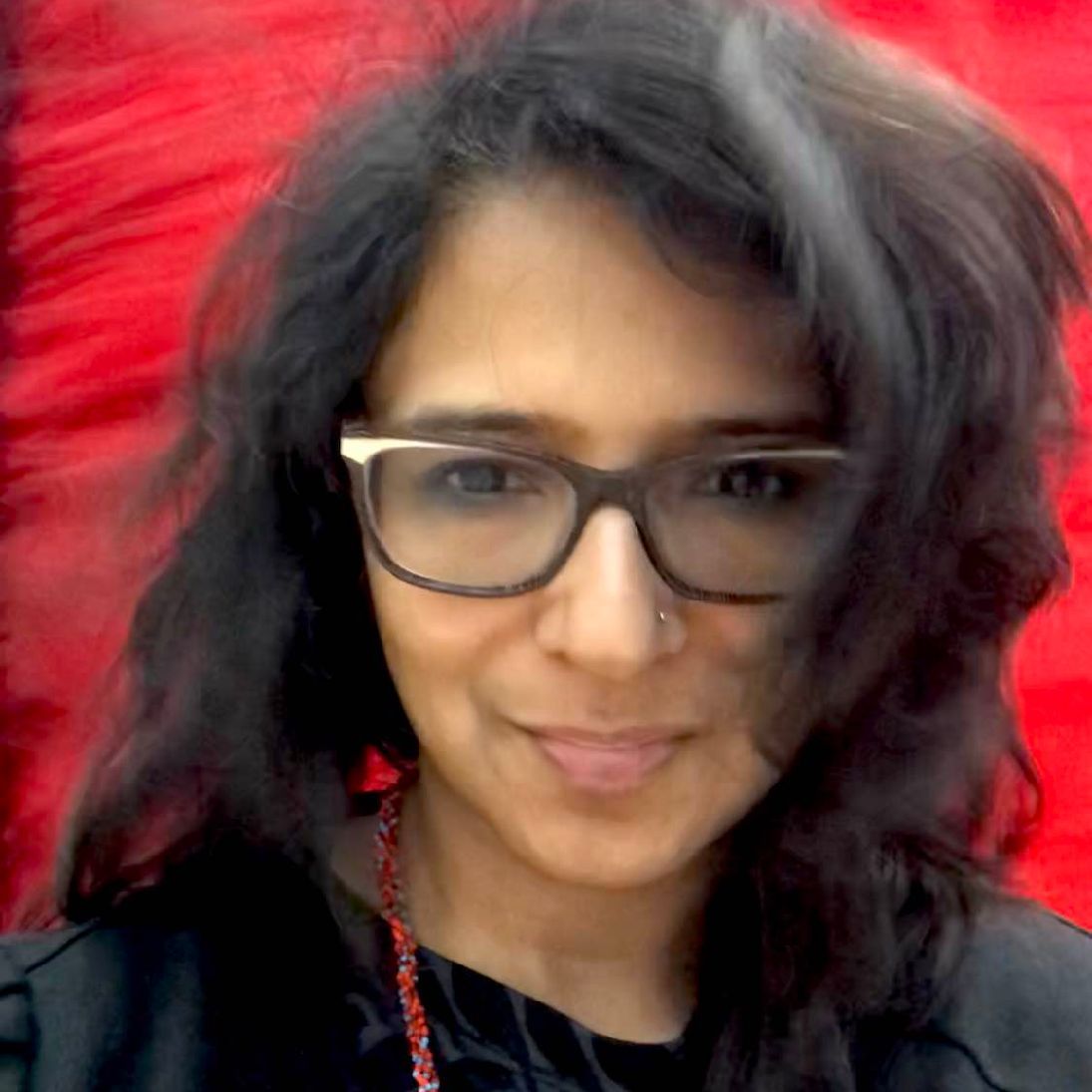
Taj Mahal-adori (2023): This video features a manipulated polaroid of a family portrait at the Taj Mahal. The voiceover includes a remix of a poem from my book, The Trouble with Humpadori (2016). A mausoleum commissioned by Mughal emperor Shah Jahan in 1631 to house the remains of his deceased favorite wife, the Taj Mahal is often used as a backdrop to romantic and family portraits for various tourists, heads-of-state, and honeymooners. As a “world wonder” of engineering, the symmetry of Taj affirms the social order of the families and lovers posing in front of it. Using acrylic blocks, I applied bilateral symmetry to the family portrait, reproducing the architecture of the minarets, arched domes, and lattice inlays in the faces and bodies of the nuclear family. In doing so, I attempt to merge figure and ground. In this video, I envision the family romance via empire—as a type of symmetry that does not just call up beauty but also a certain monstrosity. Stills from this video appear in a series called “Throw Up Pictures,” in which processed images from my immigrant family’s trip to India are mixed with lines from different poems.
The Golden Embryo (2022): The golden embryo or Hiraṇyagarbha (cosmic womb) is mentioned in the Rig Veda as a fluid point of origins, often under patriarchal management. The language, at least in some translations of the Rig Veda, can veer on the militaristic: “The seven half-embryos portion out the semen of the world at Vishnu’s command” (translated by Wendy Doniger). This video uses jerky animation to conceptualize the golden embryo in terms of large time scales and the cosmic feminine. It remixes lines from the poem, “The Golden Embryo” from my book Daughter Isotope.
Vyasa Is a Cloud (2022): This short animation contains a voiceover with the opening lines from “Vyasa Cloud” from my book Daughter Isotope (2021). Some of the images are derived from inputting hand drawn graphics as well as text from the poem “Generation Room” into the word cloud application Word Dance by Jack Goosen. Vyasa (whose name means compiler) is the purported author of the Mahabarata, a text that may have been written over multiple generations and hundreds of years. Vyasa is also a character in the Mahabharata, the grandfather of two sets of feuding royal cousins battling for control of the kingdom at the heart of the saga. This piece alludes to the story of Vyasa’s birth, which is both magical and murky like authorship itself. The music for this video was composed and edited by sound artist Jared Silvia.

Vidhu Aggarwal’s poetry and multimedia practices engage with world-building in multiple platforms: visual poetry, video, and graphic media. Her poetry book, The Trouble with Humpadori (2016), imagines a cosmic deformity as an avatar of the racialized global body. Avatara, a chapbook from Portable @Yo-Yo Labs Press, is situated in a post-apocalyptic gaming world where A.I.s play at being gods. They have published in the Poetry, Boston Review, Black Warrior Review, Aster(ix) Journal, and Leonardo, among other journals. In the multiple versions of the book Daughter Isotope, she engages in a “cloud poetics,” as a way of thinking about personal, collective, and digital archives as a collaborate process with comic artists, dancers, and video artists. A Djerassi resident and Kundiman fellow, she is the Theodore Bruce and Barbara Lawrence Alfond Chair of Literature at Rollins College. You can find them at daughterisotope.com